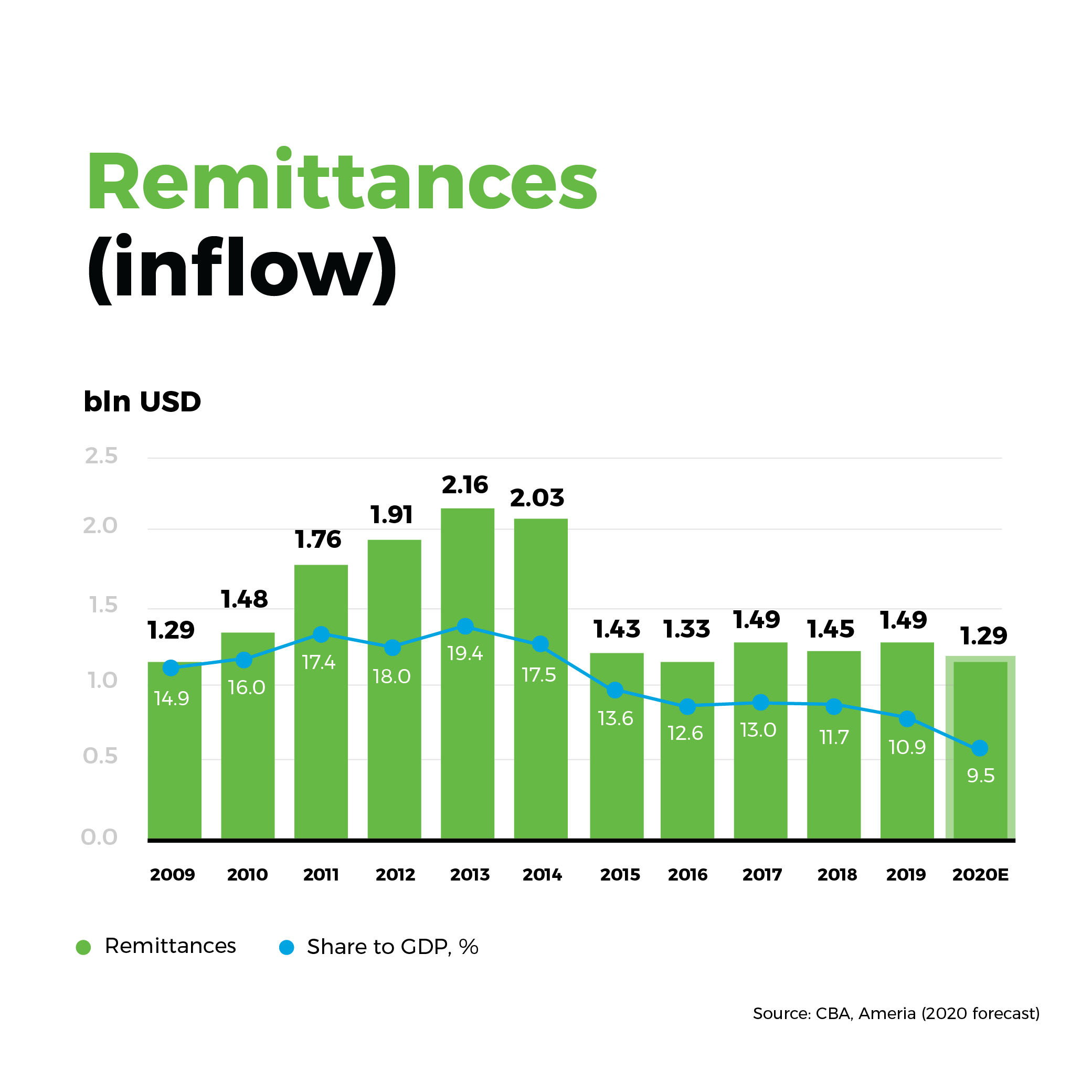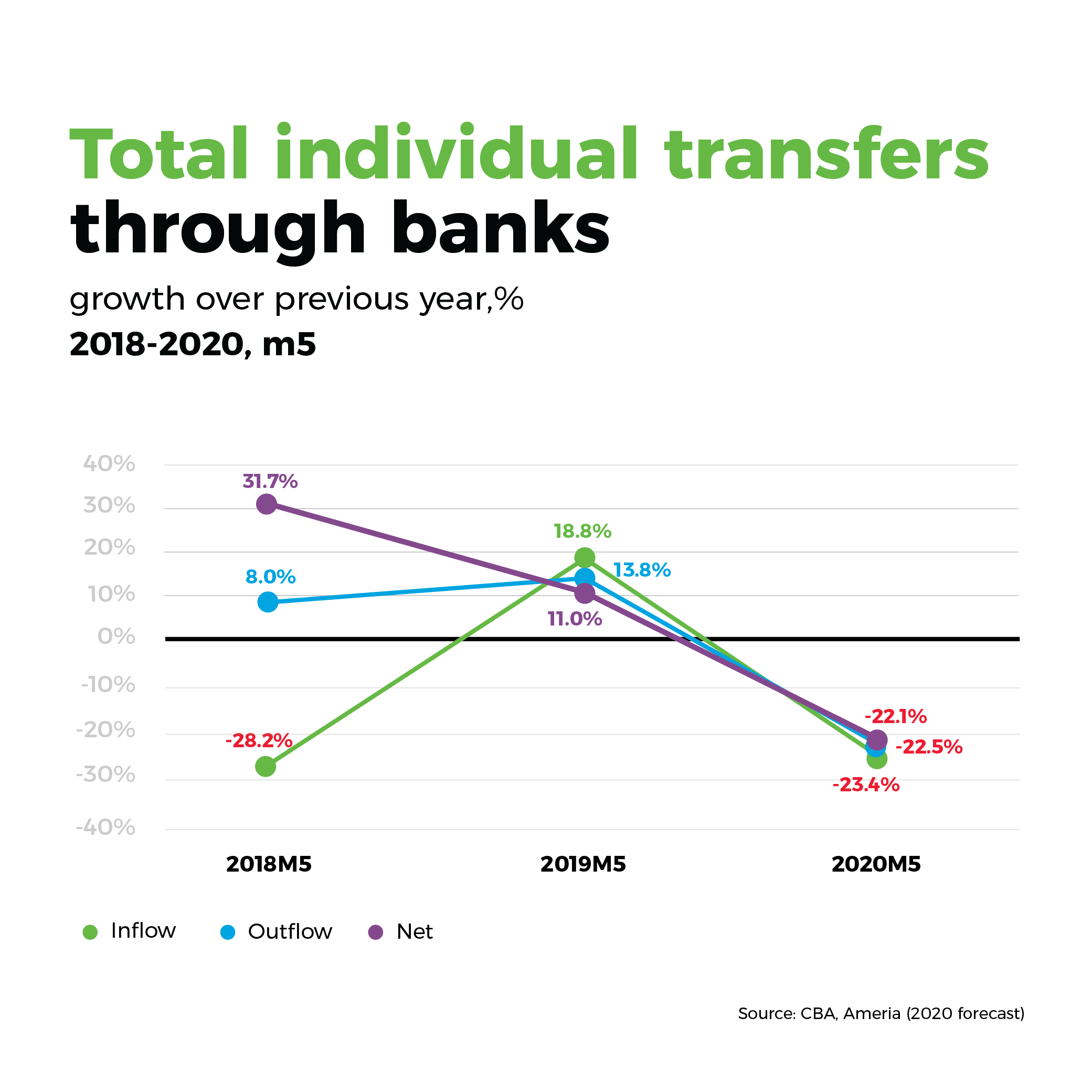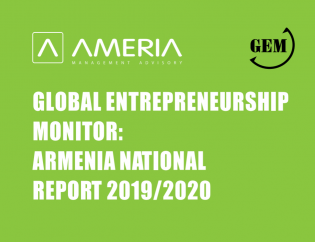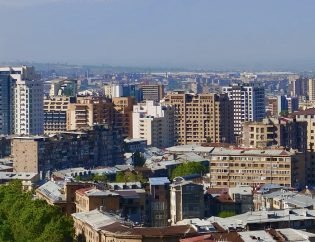
After recovery growth in 2017, remittances in USD denominated absolute volume remained nearly stabile in 2017-2019 (slight decrease by 2.8% in 2018 and 2.6% growth in 2019). In these recent years, remittances growth was always lower than growth in private transfers through banks as the latest include also commercial purpose transfers.

There are three main factors influencing inflow of remittances: economic developments in Russia/oil prices (recession in Russia with unstable oil prices in 2020), migration (decrease in 2020 due to lockdown) and exchange rates (AMD stabile vs USD, but appreciated vs RUB). All developments in 2020 predict decrease in remittances in Armenia.
We expect around 13.2% decrease in Remittances inflow and around 1.4pp decrease in Remittances/GDP indicator (9.5% vs 10.9% in 2019). The decline in remittances will be lower that decline in total private transfers through banks in 2020, as commercial activity suffers more from Covid-19 (corresponding growth for 2019 was 9.7% vs only 2.6% in pure Remittances).
In the first 5 months of 2020, inflow of total individual private transfers through banks (includes commercial purpose transfers) decreased by 22.5%, while net inflow decreased by 23.5%.

May to may transfers in USD decreased by 39.6%, while transfers from Russia decreased by 44.6%. Temporary restrictions on migrant outflow to Russia has a negative impact on the inflow of individual transfers which will impact net flow, but more negative impact is due to drop in oil prices, corresponding depreciation of Russian ruble, and recession in Russian economy.







